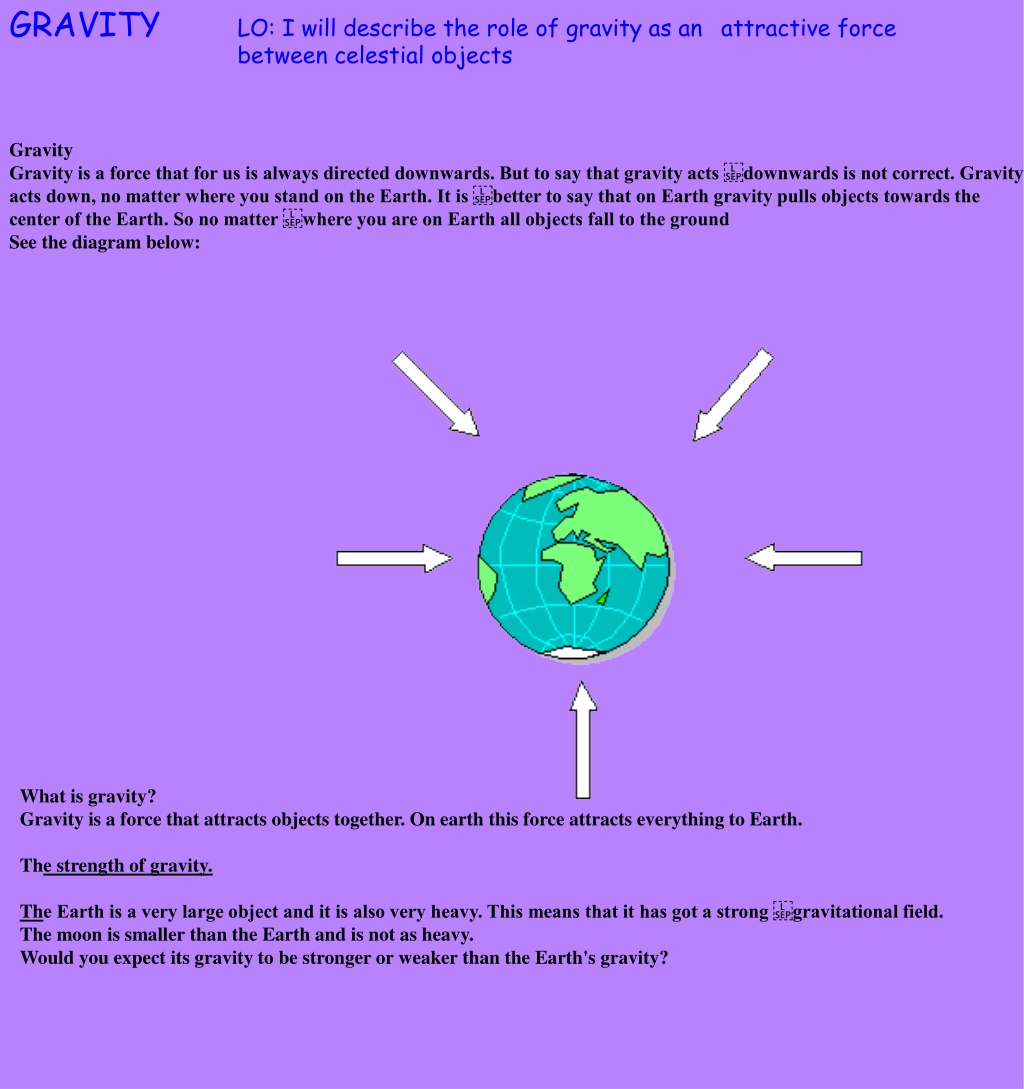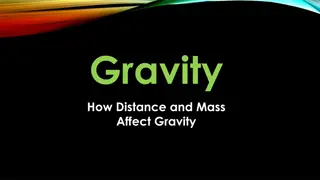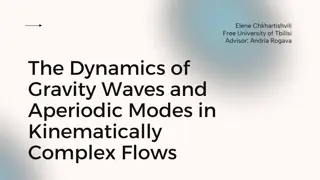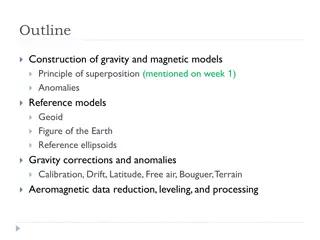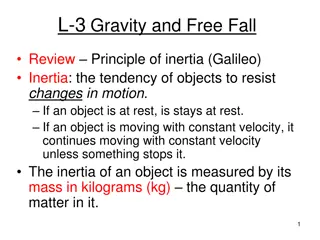Understanding Gravity: A Fundamental Force in the Universe
Gravity is a ubiquitous force that attracts celestial objects towards each other, playing a crucial role in keeping planets in their orbits around the Sun and moons around their parent planets. This force, described by Newton's laws, is responsible for phenomena like tides and maintaining the motion of objects in space. Gravity pulls all objects towards the center of the Earth, showcasing its universal influence across the cosmos.
Download Presentation

Please find below an Image/Link to download the presentation.
The content on the website is provided AS IS for your information and personal use only. It may not be sold, licensed, or shared on other websites without obtaining consent from the author. Download presentation by click this link. If you encounter any issues during the download, it is possible that the publisher has removed the file from their server.
E N D
Presentation Transcript
GRAVITY LO: I will describe the role of gravity as an attractive force between celestial objects Gravity Gravity is a force that for us is always directed downwards. But to say that gravity acts downwards is not correct. Gravity acts down, no matter where you stand on the Earth. It is better to say that on Earth gravity pulls objects towards the center of the Earth. So no matter where you are on Earth all objects fall to the ground See the diagram below: What is gravity? Gravity is a force that attracts objects together. On earth this force attracts everything to Earth. The strength of gravity. The Earth is a very large object and it is also very heavy. This means that it has got a strong gravitational field. The moon is smaller than the Earth and is not as heavy. Would you expect its gravity to be stronger or weaker than the Earth's gravity?
GRAVITY LO: I will describe the role of gravity as an attractive force between celestial objects Gravity Gravity is a force that for us is always directed downwards. But to say that gravity acts downwards is not correct. Gravity acts down, no matter where you stand on the Earth. It is better to say that on Earth gravity pulls objects towards the center of the Earth. So no matter where you are on Earth all objects fall to the ground See the diagram below: What is gravity? Gravity is a force that attracts objects together. On earth this force attracts everything to Earth. The strength of gravity. The Earth is a very large object and it is also very heavy. This means that it has got a strong gravitational field. The moon is smaller than the Earth and is not as heavy. Would you expect its gravity to be stronger or weaker than the Earth's gravity?
Gravity is responsible for keeping the Earth and the other planets in their orbits around the Sun; for keeping the Moon in its orbit around the Earth; for the formation of tides Newton's First Law of Motion Inertia means that an object will always continue moving at its current speed and in its current direction until some force causes its speed or direction to change. This would include an object that is not in motion (velocity = zero), which will remain at rest until some force causes it to move.
Gravity is responsible for keeping the Earth and the other planets in their orbits around the Sun; for keeping the Moon in its orbit around the Earth; for the formation of tides Newton's First Law of Motion Inertia means that an object will always continue moving at its current speed and in its current direction until some force causes its speed or direction to change. This would include an object that is not in motion (velocity = zero), which will remain at rest until some force causes it to move.
